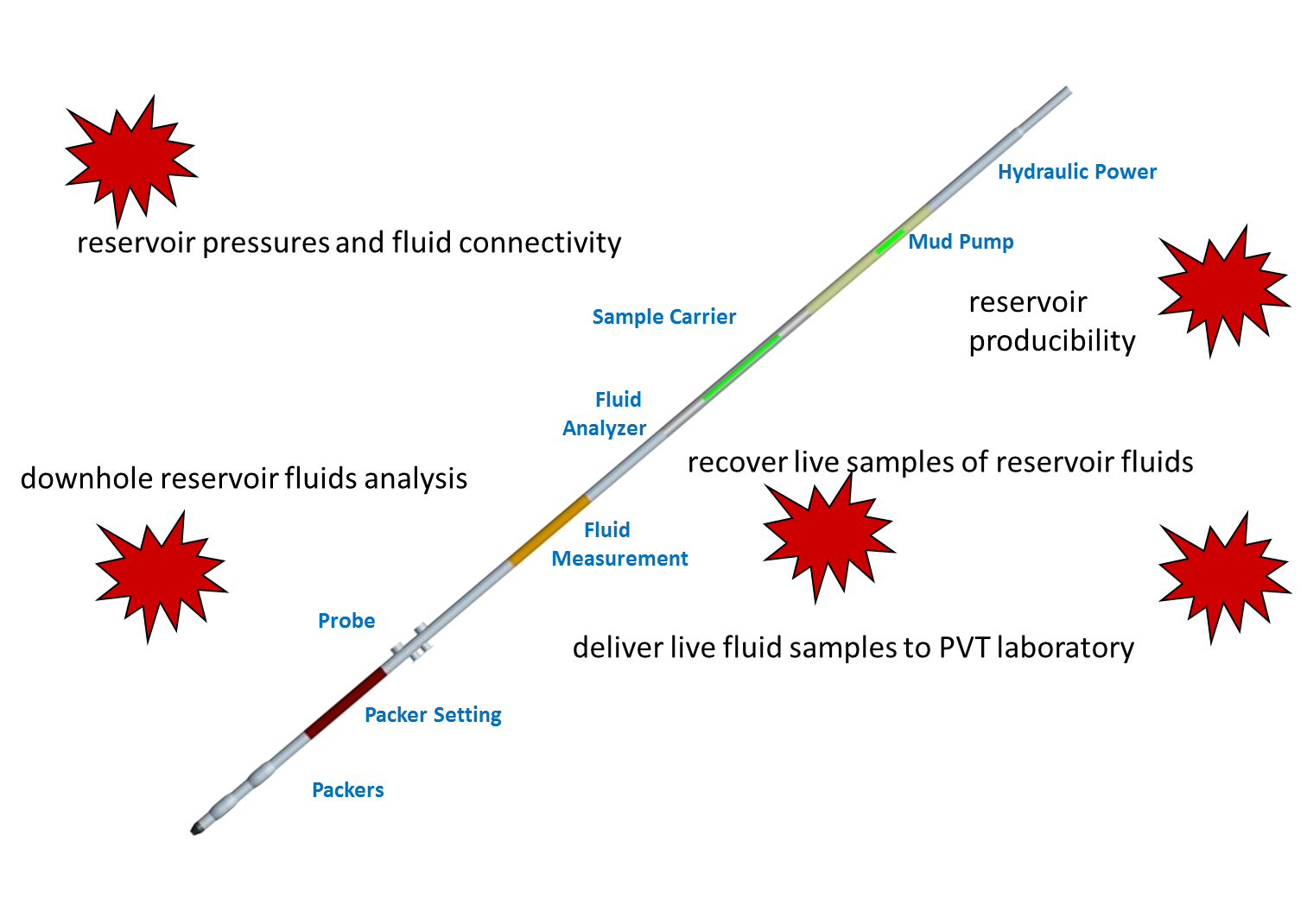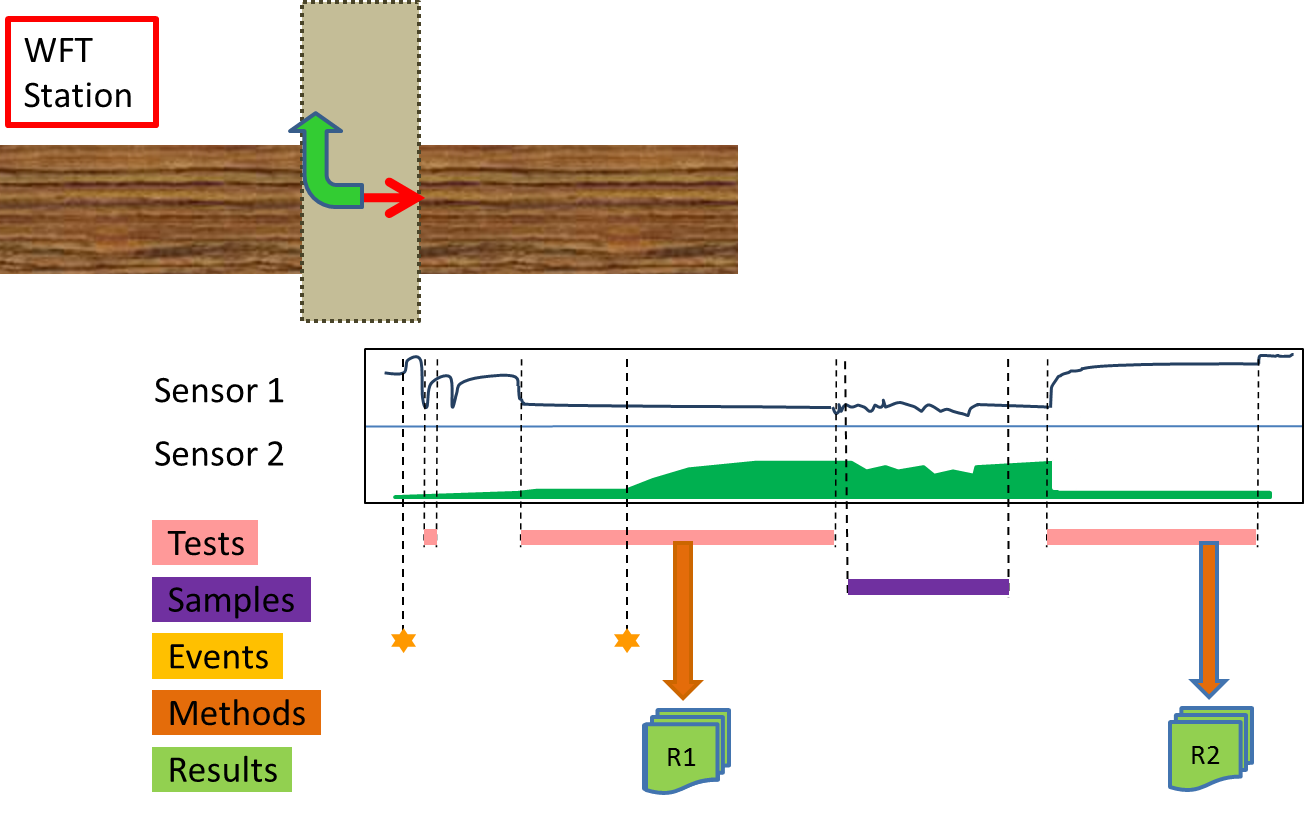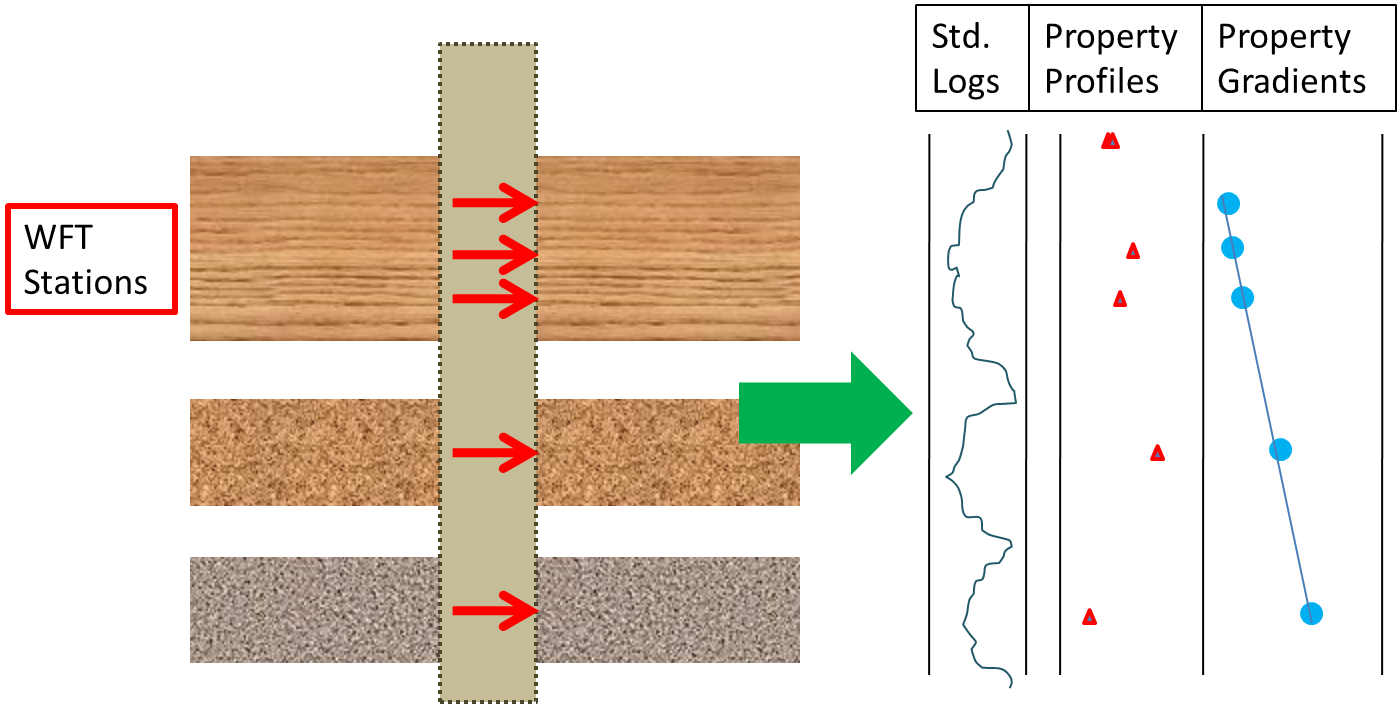23.1 Overview of Wireline Formation Tester and WftRun Data Object
| Topic Version | 1 | Published | 12/09/2016 | |
| For Standard | PRODML v2.0 | |||
This data object deals with the data generated by wireline formation tester (WFT) wireline tools. Pictures and diagrams of such tools can be seen in the slide set referenced below. This type of tool and its analysis typically generates data as follows:
- Measured Data
- Time series at specified flowing intervals/locations
- Data pre-processing
- Smooth/reduce
- Identify/tag test periods/kinds
- Analysis
- Output is reservoir/fluid parameters for the tested intervals
- Fluid Samples may be associated with intervals
Figure 23.1-1 shows a schematic diagram of such a tool and its typical uses.

Figure 23.1-2 shows a diagrammatic wireline formation tester station with the kinds of data associated with it. A probe or packers are used to isolate a small section of wellbore and open it to flow into the tester tool. Various sensors (pressure, temperature, fluid properties, etc.) then record the flowing and shut-in properties. Samples can be taken and conveyed back to surface in fluid sample containers. Results can be derived from the data collected, usually from analysis on specific Test periods within the time series.

Figure 23.1-3 shows how these station results can then be combined at the level of the whole wellbore to yield property profiles (which have larger measurement scale than typical logs), and for certain properties (especially pressure), property gradients (for example, pressure/true vertical depth is indicative of fluid density).

The data object used for this purpose is WftRun “where “run” refers to a wireline run into the wellbore with the tool, collecting time series pressure transient data and/or fluid samples from multiple stations in the wellbore
The WftRun object can store the data about the overall Run, the stations, the division of the time series into tests, the sampling details, and the results at the level of test, station, or wellbore.
The time series data itself is not stored in the WftRun object, but in WITSML Log and Channel objects (see the mapping to other domain data objects shown in Figure 2.4-1 ).